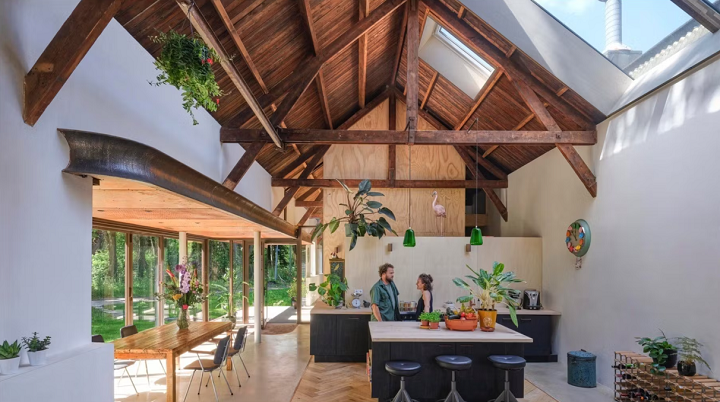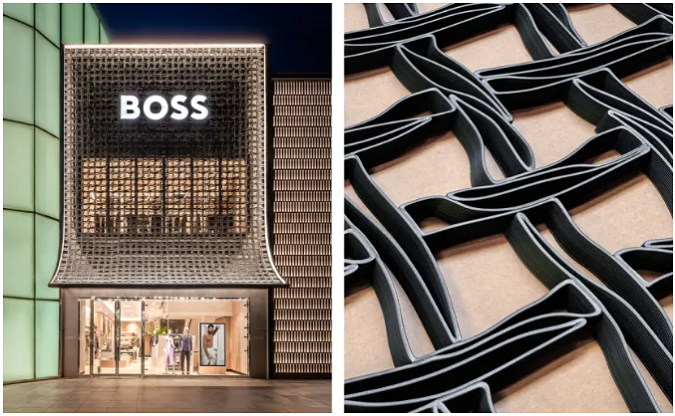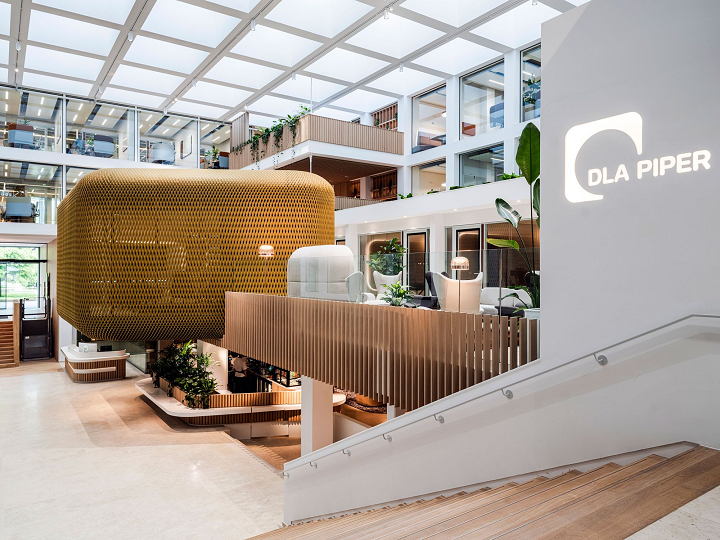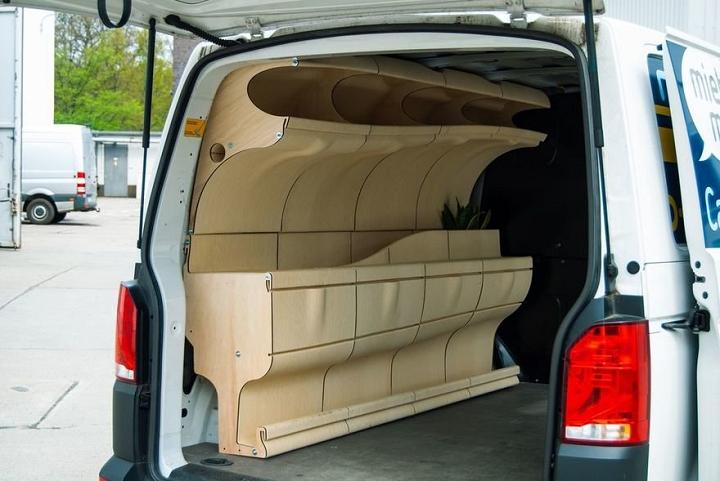In 3D Printing Information Briefs right this moment, 3D Methods introduced a serious milestone within the commercialization of the Oqton Manufacturing OS, the thirty second Japan Worldwide Machine Device Truthful (JIMTOF) introduced a document variety of exhibitors, and scientists in China used 3D printing to develop compact, multicore fiber tip probes for sensors. The CEO of MX3D and his associate constructed a home that includes a metallic 3D printed façade, and Aectual 3D printed a façade for a storefront and a gathering room for a legislation agency. Then we’ll end up with a narrative about 3D printed interiors for a tenting van.
3D Methods Reaches Milestone in Oqton OS Commercialization
Oqton Manufacturing OS permits end-to-end Additive-based workflow administration, and real-time monitoring, to ship a decentralized manufacturing answer.
3D Methods introduced a serious milestone in commercializing its software program enterprise Oqton Manufacturing OS, which the corporate bought in 2021. Vitality know-how firm Baker Hughes, which entered right into a industrial software program settlement with Oqton final yr, is now in full manufacturing with Oqton Manufacturing OS at its Houston, Texas manufacturing services. This highlights the shared imaginative and prescient of the businesses to assist decentralized manufacturing, as Oqton permits on-demand 3D printing in regulated markets by offering full factory-floor workflow integration, management, automation, and optimization, from preliminary half design and manufacturing all the best way to inspection and certification. The answer permits real-time monitoring of key efficiency indicators, facilitates and expedites the order administration course of, and provides full traceability. Baker Hughes first began utilizing Oqton Manufacturing OS to scale AM in its manufacturing workflow with out inflicting points with consumer expertise or high quality, and the system integration makes this extra environment friendly.
“We’re happy to attain deployment of this answer with our strategic associate, Baker Hughes. Oqton Manufacturing OS’ holistic method to manufacturing, alongside Baker Hughes’ experience in manufacturing for regulated industrial environments, has enabled us to reveal the real- world impression of this distinctive answer,” stated Reji Puthenveetil, EVP, additive options & chief industrial officer, 3D Methods. “Following this key demonstration of Manufacturing OS’ capability to drive efficiencies, improve automation and obtain financial savings in advanced industrial environments, we’re wanting ahead to its continued adoption.”
JIMTOF 2024 Involves Tokyo in November with File Exhibitors

One of many world’s largest machine device exhibitions, the Japan Worldwide Machine Device Truthful (JIMTOF) will probably be held at Tokyo Massive Sight from November 5-10. Consider it like IMTS, however on a a lot bigger scale. The occasion, organized by the Japan Machine Device Builders’ Affiliation and Tokyo Massive Sight Inc., can have a document variety of exhibitors this yr, with 1,262 corporations and organizations from 19 international locations and areas establishing a complete of 5,743 cubicles. With a complete exhibition space of 118,540 m2, and a rise of 175 exhibitors and 125 cubicles since JIMTOF 2022, JIMTOF 2024 would be the largest of its variety in Japan. 53 exhibitors with 192 cubicles will probably be within the occasion’s additive manufacturing space, and there are three completely different sorts of exhibitors on the occasion:
- direct exhibitors (consultant exhibitors who’ve utilized to exhibit)
- co-exhibitors (firm aside from a consultant exhibitor with its personal workers within the sales space)
- represented exhibitors (firm aside from a consultant exhibitor that doesn’t have its workers within the sales space)
The brand new JIMTOF INSIGHTS YouTube channel, which helps manufacturing in Japan, will probably be up to date earlier than, throughout, and after the occasion to, as a press launch states, “actively disseminate info on the manufacturing trade.” There are a number of co-located occasions at JIMTOF 2024, together with the Tutorial Space in South Corridor 4 that was established to develop understanding of the machine device trade. This can characteristic a “Profession Matching Sq.” for college students to work together with human sources and normal affairs employees from exhibiting corporations, in addition to the IMEC Publish Session, a Particular Displays space, and the enjoyable Open Café, with beverage service and free WiFi. The occasion may also have many attention-grabbing keynote speeches, lectures, and seminars, together with a number of choices within the JIMTOF additive manufacturing space on the primary flooring of the South Exhibition Corridor. Plus, shuttle buses and jumbo taxi cabs will probably be accessible to assist guests effectively get from one corridor to a different on the occasion. 3DPrint.com is a proud media sponsor of JIMTOF 2024! You’ll be able to register for the occasion right here.
Researchers 3D Print Multicore Fiber-Tip Discriminate Sensors

Determine 1: Schematic diagram of the MCF-tip probes for magnetic area and temperature discriminative sensing.
Magnetic area sensing performs an essential position in fields like aerospace, medical, and transportation, and optical fiber-based magnetic area sensor processes particularly have wonderful traits, equivalent to low price, excessive sensitivity, compactness, and long-distance interrogation. Sadly, these sensors are usually affected by temperature perturbation (deviation from regular state as a result of outdoors influences), and whereas this may be eradicated by integrating a number of sensing parts, it will increase the fee; plus, measurement errors will be attributable to various spatial areas of those a number of parts. However researchers from Fudan College, Shanghai College, and The Hong Kong Polytechnic College printed a paper about their work creating ultracompact multicore fiber (MCF) tip probes for magnetic area and temperature discriminative sensing.
Miniature fiber-optic magnetic area sensors are in demand as a result of their small measurement and superior anti-electromagnetic interference. The scale of the analysis staff’s entire sensing probes has been majorly decreased, in order that it’s smaller than the MCF’s outer diameter, making it very engaging. Two-photon polymerization (2PP) 3D printing was used to fabricate a bowl-shaped microcantilever, and a microfluid-infiltrated microcavity, on two completely different cores of an MCF, and these 3D printed tip probes can detect multi-signal “multi-signal on a tiny fiber tip by multi-channels inside a single fiber.” So when the sensing area is extraordinarily small, these ultracompact, delicate probes will probably be very useful in taking discriminative measurements. Plus, the flexibility to print them on-demand may assist pace up analysis efforts for MCF-tip printed constructions that may be tailored for specialised circumstances.
Hembrug Dwelling with MX3D Printed Façade in Kitchen

Picture: Jeroen Musch
For a few years, the previous army industrial Hembrug web site in Zaandam, Holland was deserted, however in 2011, redevelopment started within the space, and empty warehouses and different buildings are getting new life. Along with 25 different households, architect Julie Fuchs and her associate Gijs van der Velden—the CEO of robotic wire arc additive manufacturing (WAAM) agency MX3D—bought a part of the positioning, which lies between a enterprise park and a historic open-air museum. Their enclave of 11 small buildings is in a distant nook close to the Plofbos (forest), the place explosives have been as soon as examined and ammunition was saved. However now, these 26 households will reside and work within the space, which is the place Fuchs and van der Velden transformed an outdated portray workshop into a house. In fact, the house has a brand new metallic 3D printed characteristic inside!
The house is 34 meters lengthy and 6 meters vast, and was initially a single room. Fuchs and van der Velden needed to maintain its elongated quantity, however added rooms within the center to separate the lounge and Fuchs’s studio. These center rooms are the loos and bedrooms, and a hall runs on either side to protect what a translated article calls the constructing’s “lengthy sight strains.” The lounge flooring is made from concrete, whereas the kitchen flooring options picket planks made out of close by chestnut timber, which needed to be minimize down for soil remediation. They reused as lots of the authentic supplies as potential, leaving the constructing’s authentic single-glazed home windows within the studio and buying used doorways, sinks, and bathtubs from the Marktplaats classifieds web site. van der Velden and his colleagues from MX3D used corten metal, which is discovered throughout Hembrug, to 3D print a wavy façade that runs inside and out of doors round Fuchs’s progressive extention—a folding door that turns the kitchen from an indoor room to an outside one.
Aectual 3D Prints BOSS Retailer Façade & DLA Piper Assembly Room

Talking of 3D printed façades, Aectual not too long ago created a putting one for the not too long ago renovated BOSS retailer on the İstinyePark buying middle in Istanbul. The multidisciplinary Ippolito Fleitz Group approached the Dutch additive design agency with the imaginative and prescient of a graphic, open pores and skin that might cowl virtually the entire storefront and function a sunshade. The method started with Aectual’s Gradient panel collection, which acted as a basis for a customized sample impressed by the advanced designs present in BOSS textiles and clothes. Aectual 3D printed a number of mock-ups first, and the ultimate façade design is made up of 136 distinctive, 3D printed, interlocking items and covers 73 sq. meters. It’s useful, providing shading and temperature regulation, and likewise calls on Aectual’s famend architectural sustainability, because the storefront panels have been 3D printed out of recycled post-industrial polypropylene.

One other attention-grabbing Aectual venture was for international legislation agency DLA Piper, which needed a press release piece for the atrium of the Strawinskykouse. The agency reached out to Casper Schwartz Architects, an inside design studio devoted to creating items for working environments, however with no typical company really feel. The atrium was not initially going to characteristic a gathering room, however additional area was wanted, and as Schwartz defined to Aectual, “a way of seclusion and a personality level for your entire atrium” have been achieved by including the assembly room as a sculptural aspect. The room contains a 3D printed pores and skin design made fully of Aectual’s customized, 3D printed Origami panels, which, as Schwartz stated, “strike a steadiness between openness and privateness.” Pure gentle is ready to filter by, however the room, with its rounded corners and distinctive form, nonetheless feels secluded sufficient for personal conferences. Not solely are the panels made with Aectual’s pure, eco-friendly supplies, the colour can be personalized, giving the room the hue of a “champagne colored bonbon.”
Materialogic 3D Printed Light-weight Camper Van Interiors

Lastly, Materialogic, co-founded and helmed by industrial designer Max Cuppens, makes use of large-format 3D printing to make lovely, light-weight interiors for camper vans. The corporate has areas in Berlin, Germany and Fort Collins, Colorado, and customizes its interiors to match their shoppers’ life-style on the highway. Accessible for quite a lot of autos, makes and fashions, the corporate handles all the things for these 3D printed inside elements, from design all the best way to set up. In response to the Materialogic web site, its natural types are optimized for power and wonder, and likewise allow extra useable area within the automobile. The corporate 3D prints elements with many technical geometries, equivalent to electrical runs, insulation, lighting and mounting techniques, and air ducts. Plus, they are saying their fabrication methodology is a sustainable one, as they use a wooden fiber-based materials that apparently smells like cookies!
“We designed [our components] with the lifecycle of the inside in thoughts. If one thing will get broken or outdated we will pull the module out, shred it into pellets, and re-3D print a brand new module,” Materialogic wrote.
Subscribe to Our E-mail E-newsletter
Keep up-to-date on all the newest information from the 3D printing trade and obtain info and provides from third social gathering distributors.

